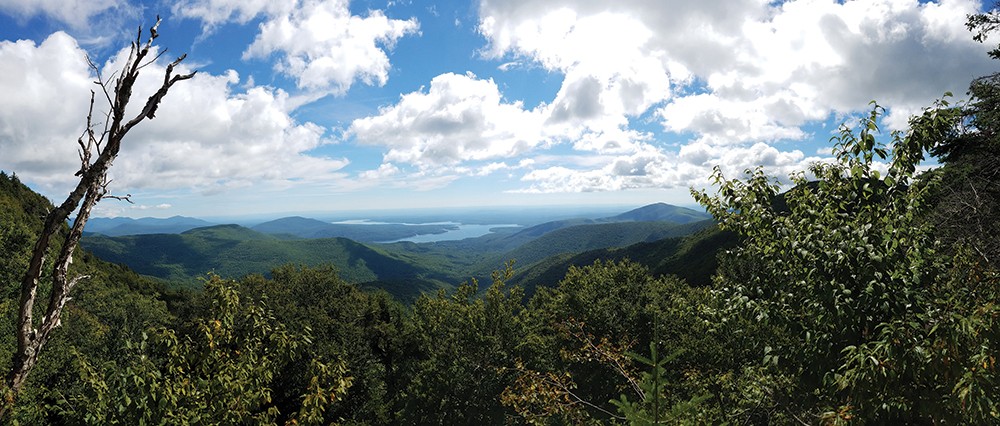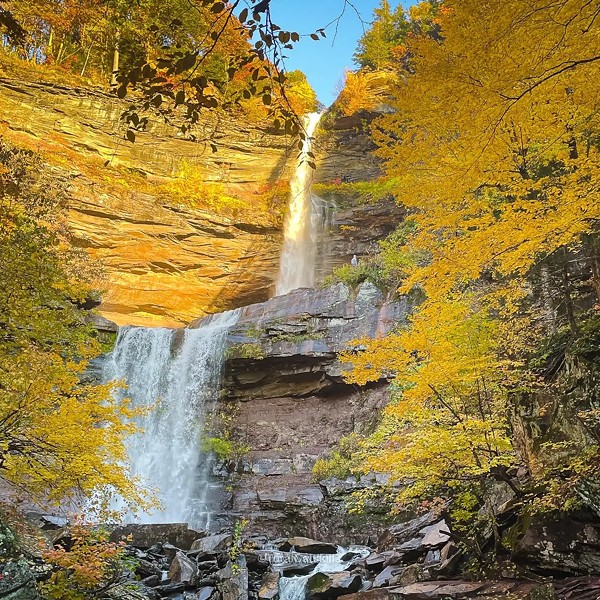With 287,500 acres of state-owned forest preserve, the Catskill Mountain range has a lot to offer hikers—from the sharp relief at its eastern edge, where it falls off into the Hudson Valley, to the merciless rises and descents of the Devil's Path. There are 98 peaks here above 3,000 feet; 35 peaks above 3,500 feet; and two peaks above 4,000 feet—Slide and Hunter mountains.
The peaks here were created by compressed sedimentary rock that was then uplifted and carved out by streams and glaciers. Because of their origins, the Catskills are known as an erosionally dissected plateau. This process explains the fairly uniform elevation of the peaks, and the deep cuts known as cloves, such as Kaaterskill Clove, where the well-known falls of the same name can be found.
Full membership in the Catskill 3500 Club requires hiking all 35 peaks over 3,500 feet and then four of these peaks again in the winter—Slide, Blackhead, Panther, and Balsam. Those who climb all 35 peaks in the winter, as Kingston resident Jake Haisley has, are awarded a winter 35'er patch. The club was founded in 1962, and leads hikes every weekend of the year. You must sign up in advance, but these hikes are free and open to the public.
Summiting these peaks gives hikers the chance to learn what makes the Catskills special—for instance, the yellow birch. "Its roots just stretch over the rock and find whatever little pocket of nutrient-rich soil it can access," Haisley says. "It's got characteristic birch bark, usually silverish or yellowish, and oftentimes, rather than growing straight up, you'll see them growing out over the trail, contorting themselves in interesting ways. It's a very Catskills tree."
Of the 35 peaks over 3,500 feet, 15 have no official trails, and require bushwhacking to gain the summit. Small canisters are maintained on these trailless peaks, and the challenge is to navigate to the summit and find the canister. The first time Haisley summited the set of 35 peaks, he did it without a GPS. "It made it more exciting. I had to actually stop and think and read the landscape and read the map and use the compass," he says.
Catskill 3500 Club President Heather Rolland describes finding the sign-in canisters as euphoric. "It's like hide and go seek, but it's the next level up. You've got to find it and it's smaller than a bread box," she says.
Yet this area is more than a playland for people's enjoyment. The areas above 3,500 feet that define the high peaks are also a bird conservation area, in part because of the Bicknell's thrush. This songbird was first discovered in the late 19th century on Slide Mountain, and it is vulnerable partly due to its very restricted range, limited to the kind of high-altitude coniferous forest that gives the Blackhead Range its name—with evergreen foliage that looks dark against the white snow when deciduous trees are bare. The songbird's numbers may also have been impacted by the impact of mercury pollution on its ability to mate, and the destruction of forest in its winter habitat in the Dominican Republic.
Between 1990 and 2015, hiking in the high peaks has more than doubled—as measured by the number of hikers registering in Ulster and Sullivan Counties (where many of the high peaks are located). And between 2010 and 2016, canister sign-ins, a measure of trailless peak ascents, have also more than doubled. Rolland describes hiking Thomas Cole (part of the Blackhead Range) and finding Balsam firs hacked down, with wildflowers and moss replaced by hard-packed earth. Marking a new trail or cutting down trees is illegal. But even responsible hikers can alter the landscape—with heavy foot traffic generating de facto trails called herd paths, even on the peaks that are not supposed to have trails. Hikers should use caution when relying on these herd paths, as they do not always lead to the summit.
In order to enjoy these peaks responsibly, seasoned hikers like Rolland and Haisley urge leave-no-trace principles. Those who are not confident in their skill to summit a particular peak can also join a hike led by the Catskill 3500 Club, rather than going at it alone. And recognizing your responsibility to the Catskills may actually enrich your experience—Rolland couldn't keep the excitement out of her voice when she started talking about the club's new search and rescue team. "Our club has people who are really expert in off-trail navigation, for whom spending 10 hours slogging through brush is nothing—we do that for fun."

















